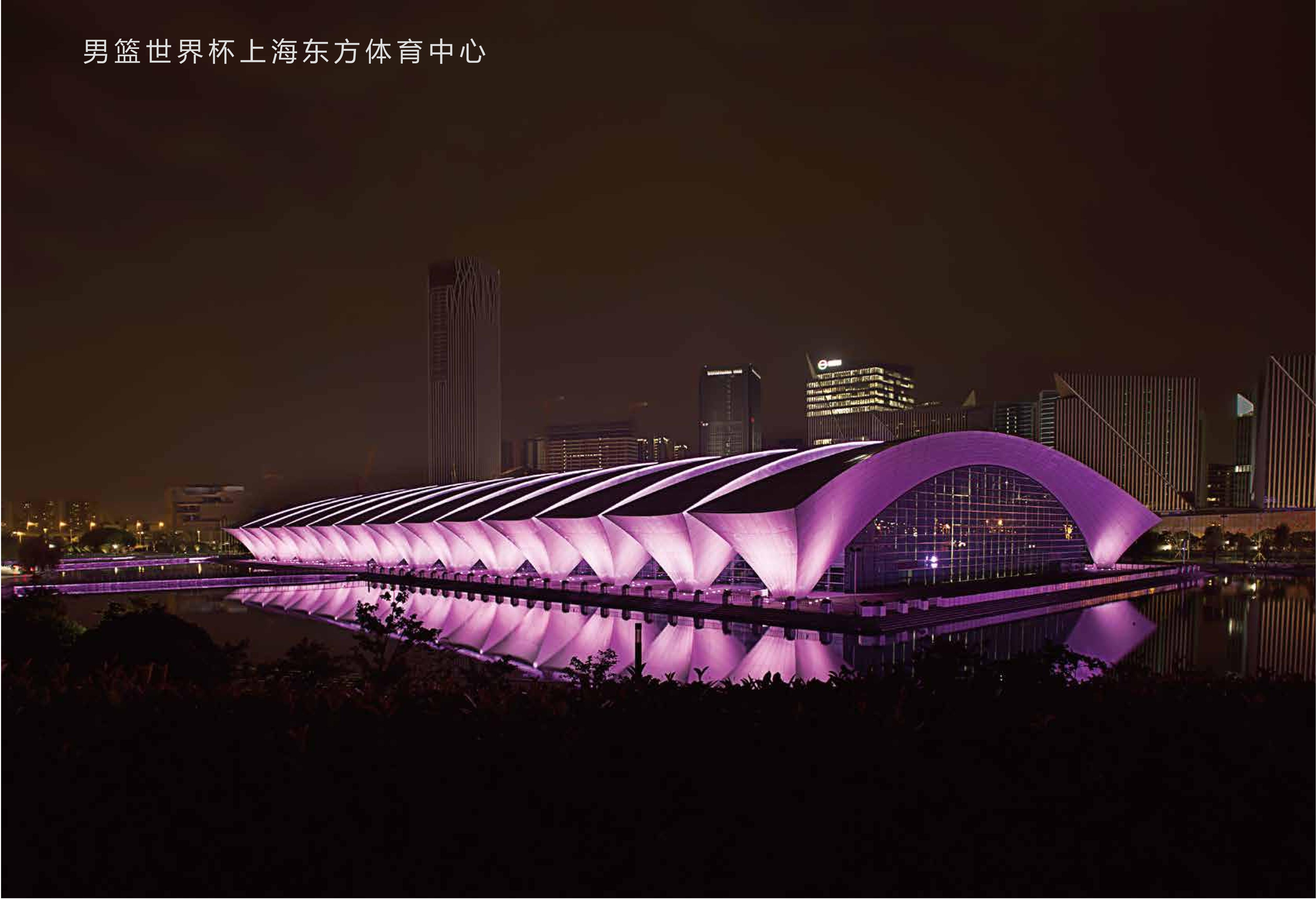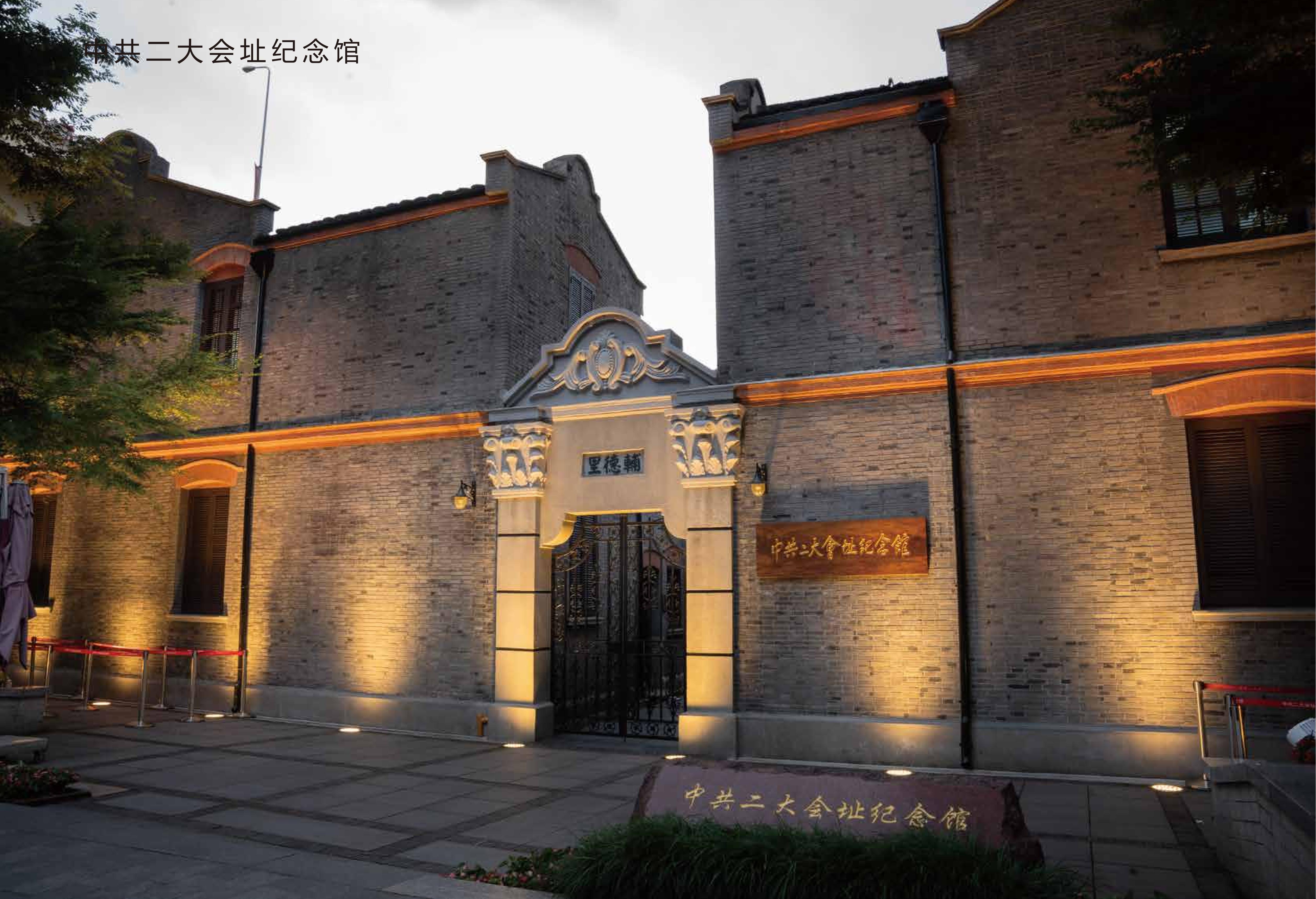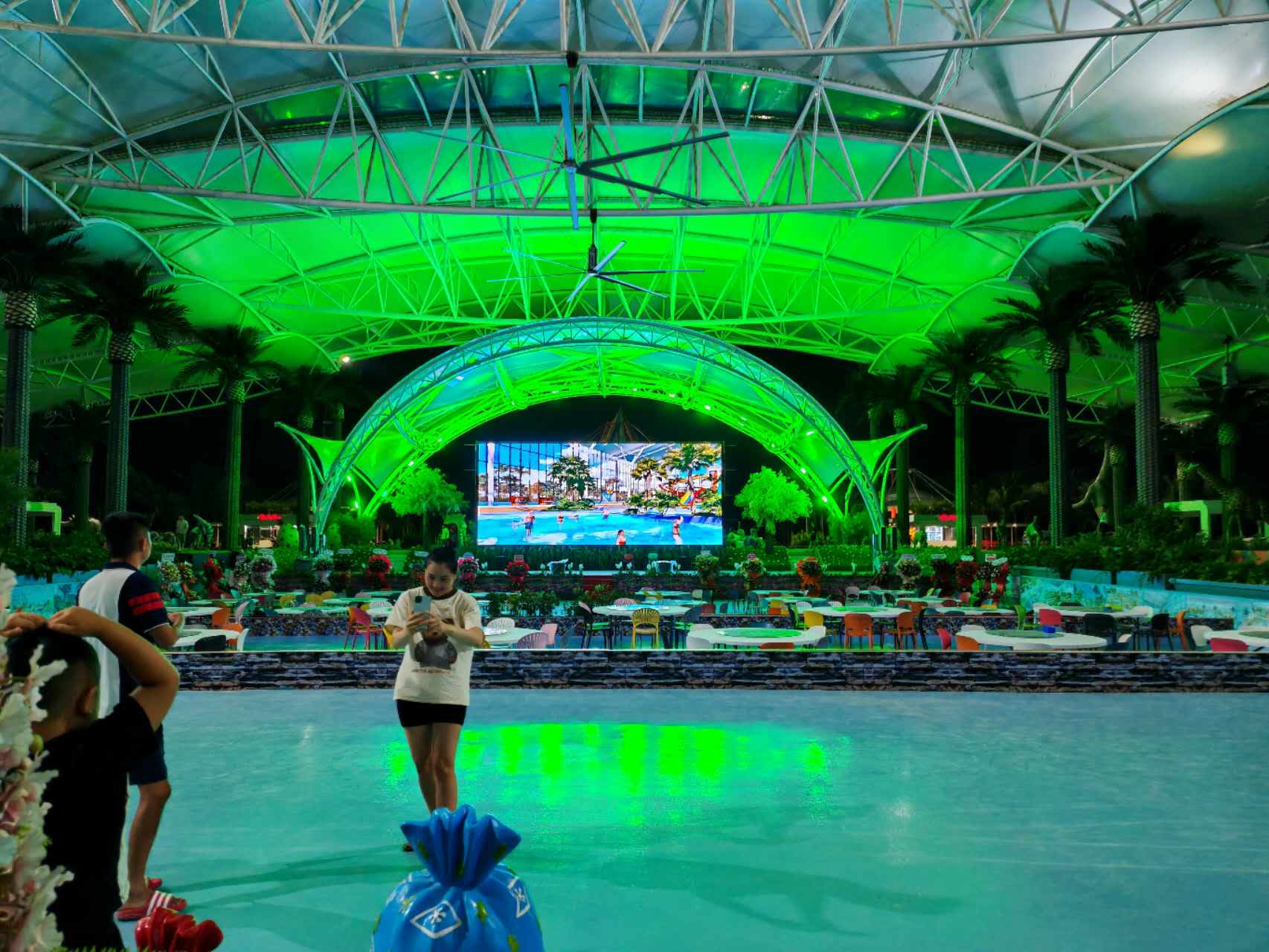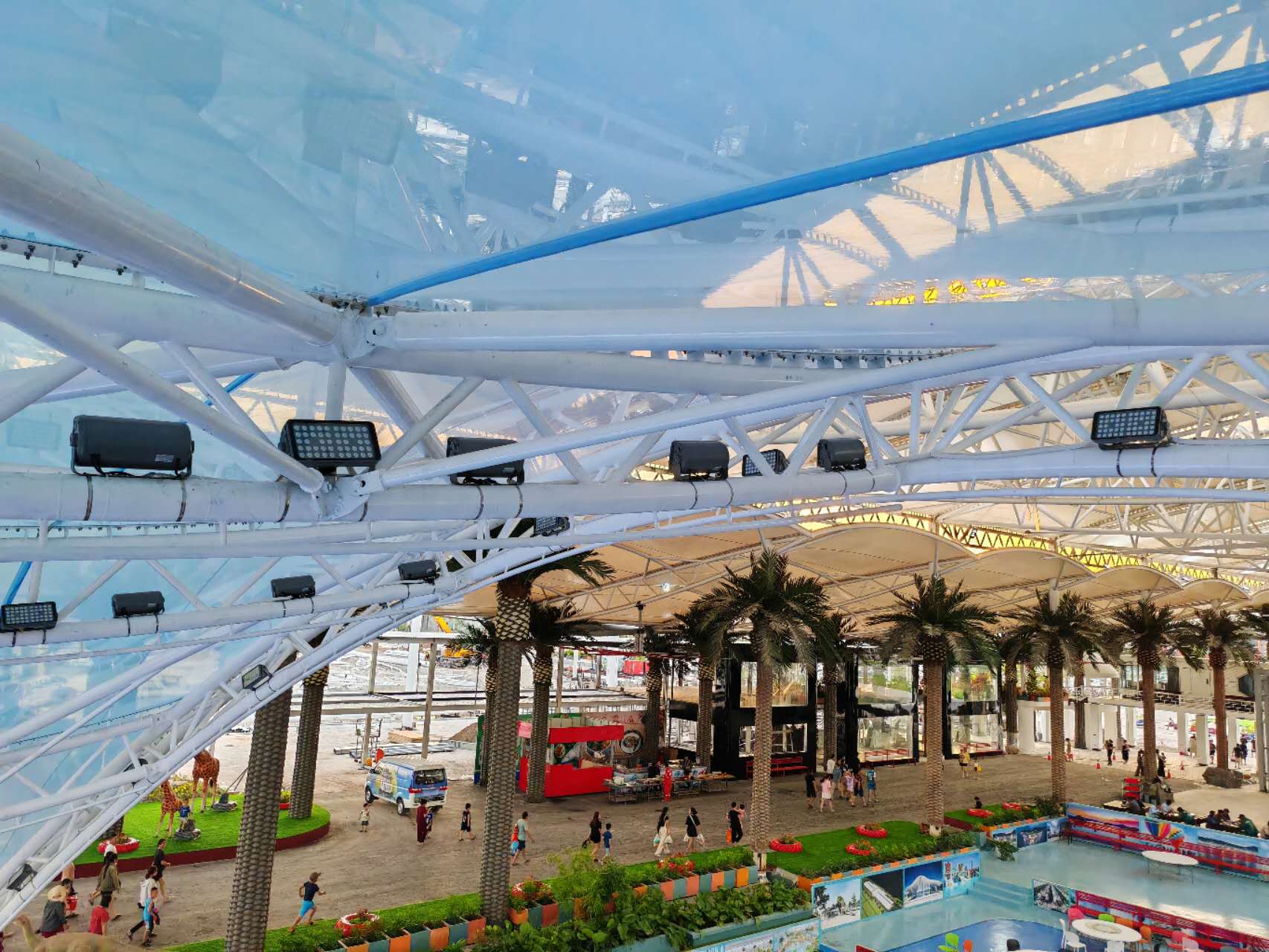The first step in selecting outdoor lighting isn't to look at style or compare price:
But to get back to the basics: where will it be illuminated? Why? Lighting needs vary greatly from area to area, and blindly installing fixtures will only result in "ineffective lighting" and even energy waste:
1.1 Path and Stair Lighting:
l Safety and glare prevention are paramount. We recommend IP65 Underground lights or low-profile lawn lights to avoid direct glare. For example, the "flying saucer lights" used on the lakeside trails in “Xujiahui” Park precisely control their beams to illuminate the ground, avoiding upward scattering.
1.2 Building Facades or Sculptures:
l To highlight artistic appeal, spotlights with a high color rendering index (RA ≥ 90) are required. For example, the NVC Lighting LAFA Pro series, with a color rendering index of RA99, faithfully reproduces material textures.
1.3 Courtyard Leisure Area:
l Create an atmosphere with wall lamps featuring adjustable color temperature (2700K-4000K). Paired with the XIAOMI Smart Color Light's 16 million color modes, you can easily switch between "party" and "meditation" scenes.
1.4 Waterscape or Pool:
l Must be IP68 waterproof and able to withstand long-term underwater immersion. For example, stainless steel ground lamps, while consuming only 2W, can withstand pressure up to 1 meter underwater.
1.5 Brightness Selection Must Be Scientifically Quantified:
l Excessive brightness is not only wasteful but also causes light pollution. It is recommended that courtyard illumination be maintained between 100-300 lux and path illumination between 50-150 lux. For example, a 20-square-meter terrace can utilize luminaires with a total luminous flux of 4000 lm. Multiple luminaires can be distributed to avoid overexposure in certain areas.
Case Study:
l “Xujiahui” Park's "Seasonal Color Mist" installation automatically switches lighting modes based on pedestrian detection, integrating functional lighting (traffic guidance) with artistic lighting (water mist projection), thereby doubling visitor stay time.
2. Environmental Adaptability: Waterproof and Dustproof Are Just the Start
Outdoor lighting is constantly exposed to wind, rain, UV rays, and temperature fluctuations. The IP rating (IP code) is the baseline for survival. But environmental adaptability goes far beyond this.
2.1 Waterproof and Dustproof: Look for the IP rating
l IP65: Dustproof and resistant to low-pressure water jets, suitable for sheltered balconies and eaves.
l IP66/67: Resistant to high-pressure water jets and brief immersion, suitable for open courtyards and beachfront areas.
l IP68: Safe for extended underwater use (>30 minutes), essential for pool and fountain lights.
Application | Recommend IP Grade | Representative product types |
Balcony/Eaves | IP54-IP65 | Wall Lamps, Chandeliers |
Garden/Lawn | IP65-IP66 | Lawn Lights, Column Lights |
Water Feature/Swimming Pool | IP68 | Underwater Spotlights, Underground Lights |
Windy And Sandy Areas | IP66+UV-Resistant Coating | Windproof Street Lights |

2.3 Extreme Temperature and Corrosion Protection
l Low-temperature areas: Choose lamps with built-in respirators (such as Chint's 100W streetlights) to prevent condensation and ice formation.
l High-humidity coastal areas: Prefer stainless steel with anti-sulfurization technology. Foshan Lighting's Galaxy series uses IPSL technology to resist salt spray corrosion, increasing its lifespan tenfold.
l Chemically contaminated areas: Anti-corrosion coatings are required around chemical plants to prevent oxidation and failure of the metal lamp body.
3. Light Efficiency and Health: From "Brightening Up" to "Brightening Scientifically"
Light pollution prevention and control has become a global issue. The concept of healthy lighting emphasizes light spectrum adaptation to human circadian rhythms:

3.1 Dynamic color temperature adjustment protects ecological health. The "flying saucer lights" in Xujiahui Park are highly forward-thinking:
l Turn on at 6:00 PM: 4000K neutral white light for a refreshing effect.
l After 9:00 PM: Dim to 3000K warm yellow light to stimulate melatonin secretion.
l Before dawn: Boost to 5000-6000K cool white light to simulate morning light for a refreshing effect.
3.2 Anti-glare and Dark Sky Design
l Choose lamps with a UGR <19 rating: The Philips Hue series is IEEE1789-certified for flicker-free lighting, eliminating glare during gatherings.
l Beam angle control: Narrow beams (15°-30°) focus on sculptures, while wide beams (>60°) wash over walls. Installing linear lights at a 45° angle can reduce light pollution on the skylight.
3.3 Dual Upgrades in Energy-Saving Technology
l High-Efficiency Chip: Qinshang Optoelectronics' GaN-on-GaN chip boasts a luminous efficiency of 220 lm/W, using 40% less energy than traditional LEDs.
l Wind, Solar, and Energy Storage: Jingtai Optoelectronics' solar garden lights boast 90% daytime energy storage efficiency and up to 12 hours of battery life even on rainy days.
4. Lighting Type Analysis: Matching Lights to the Scene for Maximum Utilization
4.1 Floodlights: Wide-area, High-Brightness Illumination
l Applicable Scenarios: Building Facades, Tree Lighting, Parking Lots
l Recommended Specifications: IP65+ + 100-200W wattage. For example, a 200W FSL floodlight with COB LEDs can cover over 1,000 square meters.
4.2 Linear Lights: Create Contours and a Technological Look
l Advantages: Bendable and Customizable, Concealed Installation (e.g., on Steps, Handrails)
l Pains: High Maintenance Costs, Requires a Split Design (e.g., OPPLE T5 Tubes, with Separate Driver and Body)
4.3 Table: Comparison of advantages and disadvantages of mainstream outdoor lighting types:
Types | Core Advantages | Typical defects | Applicable Scenarios |
LED Flood Light | Long irradiation distance and high power | Prone to glare, requires precise angle adjustment | Building facades, squares |
LED Linear Light | Customizable shape, borderless and minimalist | Poor heat dissipation and high maintenance costs | Stairs, bar, wall |
LED Underground Light | Anti-trampling, no damage to the landscape | High waterproof requirements (IP68) | Trails and swimming pool area |
Solar Garden Lights | Zero electricity bill, free installation | Battery life fluctuates on rainy days | Garden and community paths |

4.4 Intelligent System: From Single-Light Control to Global Interaction
l Basic Functions: Remotely turn lights on and off, and adjust brightness via the Mi Home app.
l Advanced Scenario: Huawei's HarmonyOS supports automatic light off on rainy days, and Alibaba Cloud IoT generates custom lighting patterns.
5. Quality Verification: Practical Tips for Avoiding Specification Traps
5.1 Three Key Elements of Durability
l Heat Dissipation Structure: Fin heat dissipation (such as FSL floodlights) or graphene coating (FOSHAN Lighting), which has a lifespan three times longer than pure adhesive seals.
l Material Authenticity: Die-cast aluminum thickness ≥ 2.5mm, stainless steel grade 304 or higher.
l Waterproofing: Prefer physical snap-on seals + silicone seals over simple adhesive potting (which can age and yellow).
5.2 Certification and Warranty: Hidden Cost Moat
l International Certifications: CE/ROHS (Electrical Safety), ErP (Energy Efficiency, such as OPPLE's bio-based lamps).
l Warranty Period: No more short-term one-year warranties! Major brands like Philips and NVC offer a minimum three-year warranty.
5.3 Cost-Effectiveness Formula: Long-Term Cost > Unit Price.
Taking a 30W solar garden light as an example:
Low-Price Model (100 RMB): Uncertified aluminum shell, scrapped after 2 years, total cost 100 RMB.
High-Quality Model (300 RMB): IP66+5-year warranty, average annual cost 60 RMB.
6. The Future Has Arrived: A Revolution in Smart and Sustainable Lighting
l Outdoor lighting is undergoing a transition from "tool" to "environmental symbiosis".
l Light Health 2.0: Brands such as Fuzhu are developing dual-mode "rhythmic light + mood light" to regulate dopamine secretion through light spectrum.
l Material Revolution: Plant-based encapsulants (reducing carbon footprint by 35%) and recyclable silicon-based LEDs are accelerating their adoption.
l Deep AIoT Integration: Huawei's smart streetlights integrate Ascend chips, expanding charging station and environmental monitoring capabilities.
Design Trends: For example, the "bullet screen lights" in “Xujiahui” Park project citizen-submitted designs onto the running track, transforming lighting from "passive acceptance" to "public co-creation."
Conclusion: A good lamp illuminates the beauty of life
Choosing outdoor lighting is a balance between rationality and aesthetics—waterproofing ensures safety, color temperature changes reflect the rhythm of nature, and intelligent linkage improves efficiency. Ultimately, the magic of light and shadow unfolds quietly amidst the evening breeze and family conversations in the courtyard. When technology returns to human needs, every beam of light can become the key to a poetic home.




